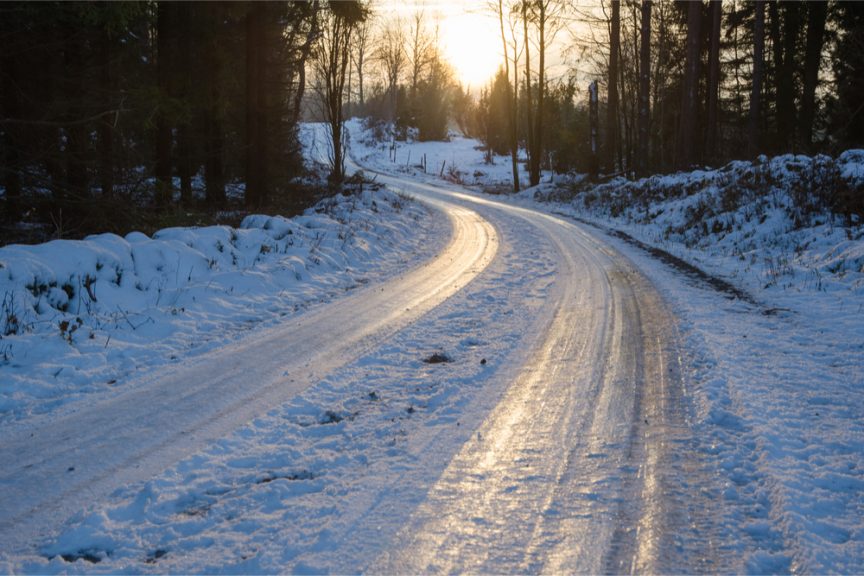Gravel roads need regular maintenance, especially as winter weather intensifies. These six tips for maintenance in the colder, snowier months can help protect your road from the elements.
Winter can be a challenge, especially if you regularly rely on gravel roads for transportation. Freezing temperatures and heavy snow can quickly fragment and erode the aggregate, leaving the road nearly unusable. With little opportunity to repair them in driving snow or blistering cold, a town or county might find itself without navigable roads in the event of an emergency.
It doesn’t have to be that way. Indeed, there are simple measures that any village or rural community can take to reinforce their gravel roads before the first snowfall. We’ll outline some surefire strategies to help you protect your roads throughout the coming winter.
1. Assess Your Roads
Before the temperatures fall below freezing, you want to take a good look at your roads and evaluate their current state. Are there ruts or potholes? Is the gravel evenly distributed throughout? Taking note of these potential issues allows you to more proactively address them before the weather worsens.
2. Get Graders and Scrapers
A rear grader blade or box scraper that can be attached to a tractor is an indispensable maintenance tool, as it quickly and efficiently smooths out roads in the dead of winter. If you can keep either on hand, you should affix it to the tractor’s 3-point hitch, with the blade tilted toward the edge of the migrated gravel pile.
3. Move Old Gravel
Heavily used gravel roads may be plagued with loosened aggregate that’s swept to the side or otherwise displaced. Fortunately, you can easily refill any potholes or ruts by attaching a grader or scraper to a tractor, positioning the blade above the pile of migrated gravel, and slowly pulling it forward starting on the right side of the lane. Any roots or grass you pull along with the gravel will find their way out, so don’t be concerned if you see some catch on the grader or scraper.
4. Add Extra Material
Even after you’ve placed the gravel back in its rightful place, you may still find that your roads need additional aggregate. To remedy this problem, you should buy some more aggregate in the fall, ideally ¾” unwashed screen-crushed rock for emergency use throughout the winter.
5. Smooth It Out
With the additional aggregate on hand, you can either spread it evenly on the road yourself or have the company who delivered it spread it with a truck. But make sure that the added layer of gravel isn’t too thin or unevenly applied. After the gravel has been initially dispersed, you can go over it again using the same tractor and grader/scraper setup to form a more even, tightly-packed surface layer.
6. Stabilize the Soil
Soil stabilization may be the most effective solution to any maintenance challenges associated with gravel roads. With more than four decades of experience developing and implementing soil stabilization technology, Midwest Industrial Supply, Inc. has the expertise needed to transform any gravel surface into a sturdy roadbed that can withstand the harshest winter weather.
Backed by GreenPave®, our patented natural paving technology, our soil stabilization products bind with the road’s native soils to engineer a surface with the strength and durability of paved asphalt. The stabilized road resists erosion, prevents moisture penetration, and traps emissions as soon as they’re generated, providing users with incomparable value. Regardless of the length or condition of your roads, we can work with your village or township to develop a customized application program that keeps them in working order throughout the winter.


